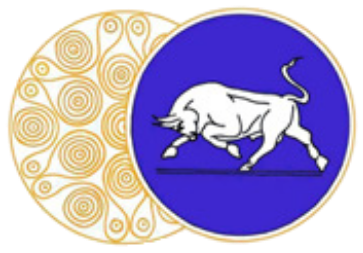Call for Papers: Decoding Representations of Status in the Bronze Age Aegean
Decoding Representations of Status in the Bronze Age Aegean
Patterns, definitions and interpretations
The symposium will be hosted online by Dokuz Eylül University Archaeology and Archeometry Application and Research Center in Türkiye and the Irish Institute of Hellenic Studies at Athens on 28-29 November 2024 via Zoom platform. The symposium language will be english and the presentations will have a duration of 20 minutes.
All abstracts should not exceed 300 words and include name, title and affiliation. Abstracts should be sent to vergakia@tcd.ie
Deadline to send the abstracts: 01.09.2024; Announcement of the accepted papers: 15.09.2024
The papers will be published in Dokuz Eylul University Press and therefore specific deadlines will be announced after the the symposium ends for the preparation of the relevant articles.
Further details
Αrchaeology as a discipline has something more to contribute, other than simply providing top-down suggestions on the social milieu of Bronze Age Societies in the Aegean. The attribution of “palatial” connotations to every single manifestation of status and power has led in ambiguity as far as our methodological tools are concerned, thus in biased interpretations associated with social life and the peoples acting within its realm. Moreover, in spite of the fact that archaeology is mainly a social science, there is a purvasive reticence to embrace theoretical approaches, especially when they are bottom-up directed, on social organization concurrent with its general antitheoretical tendencies. Issues in archaeology such as studies of inequality, social stratification, status manifestations, gender studies, sexual specificity, cultural and heritage representation and management, have very recently become the focus of research and may lead us to a better understanding not only of past societies but also of the present ones. This workshop aims to discuss status (social, political, gender, religious status etc) in its context under a bottom-up perspective through the lens of its representations as they are presented within the archaeological record. The ultimate objective will be to decode patterns of status representations, thus to define status at each case within the framework of Bronze Age Aegean.
Topics of Study
1. Manifestations of status on pottery
Decoration, shapes, rendering of symbols and spesific use of pottery in context.
2. The semantics of symbols in LBA society
Double axes, “Horns of Consecration”, Sacred Knots, flowers and more: Religious and/or status symbols? Where are they found, what are their contextual conjuctions and suggested interpretations on their significance based on contextual data and updated methods of analysis.
3. Display of status in graves
Warrior tombs, weaponry, offerings with possible status connotations, funerary architecture and its relation to status.
4. Rituals (religious and/or secular) and status connections
Evidence from wall paintings, feasts, seals and sealings, evidence on Liner A and B tablets.
5. Defining status through architecture
Types of elite architecture: use and social significance, domestic architecture and traits of preeminence, building materials and their social connotations (ashlar, megalithic masonry etc.).
6. Storage strategies and their relation to status
Storage capacity, storage strategies in domestic and “palatial” complexes, products under storage and possible status indications.
7. Possession of metals and status
Status inequality and metal hoarding, metals quality and trade networks as status signifiers.
8. Indications of status in the osteoarchaeological and archaeobotanical archaeological data.
Is the kind of food partaken by a/an community/house/individual an indicator of status? Is the access to food an indicator of status?
9. Theoretical approaches on status
What does status mean? Which could be its manifestations? Status vs Gender: Modern perceptions of status and their impact on archaeological intepretations. Defining status in Bronze Age Aegean.
Scientific Board
Prof. Engin Akdeniz
Prof. Ayşegül Aykurt
Prof. Naoise Mac Sweeney
Prof. Recep Meriç
Prof. Joanne M.A. Murphy
Prof. Andreas G. Vlachopoulos
Prof. Remzi Yağcı
Assoc.Prof. Chrysanthi Gallou
Assoc.Prof. Barış Gür
Assoc.Prof. Hakan Öniz
Dr. Konstantinos Paschalidis
Dr. Vassiliki Pliatsika
Dr. Anastasia M.A. Vergaki
Executive Board
Prof. Joanne M.A. Murphy
Assoc.Prof. Barış Gür
Dr. Konstantinos Paschalidis
Dr. Anastasia M.A. Vergaki
Contact information: Dr Anastasia Vergaki (IIHSA): vergakia@tcd.ie

